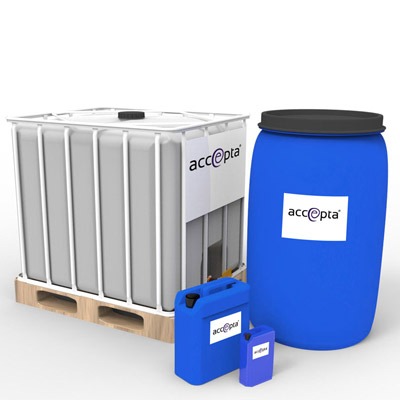Comprehending the Relevance of Foam Control in Food and Drink Handling
Comprehending the Relevance of Foam Control in Food and Drink Handling
Blog Article
Understanding the Importance of Foam Control in Industrial Processes
In industrial procedures, foam control is usually an overlooked yet essential element that directly affects functional effectiveness and item honesty. The presence of too much foam can result in significant challenges, consisting of interfered with mixing and decreased response kinetics, which may inevitably impact product top quality across numerous sectors such as drugs and food production. Recognizing the subtleties of foam management, consisting of prospective developments and effective approaches, increases vital concerns concerning finest techniques and future advancements. What are the effects for industries pursuing boosted efficiency and compliance?

The Duty of Foam in Market
Foam plays a considerable role in numerous commercial processes, affecting both effectiveness and item quality. In fields such as food and drink, pharmaceuticals, and petrochemicals, foam can serve both damaging and advantageous purposes. For instance, in the food sector, foam stabilization is crucial during processes like light whipping cream or generating beer, where the quality of foam directly impacts customer assumption and product attributes.
In chemical manufacturing, foam can function as a barrier, stopping the appropriate mixing of reagents, which can bring about suboptimal yields and incomplete responses. Conversely, in processes like flotation protection in mineral handling, foam is made use of to divide valuable minerals from waste material, boosting healing rates.
In addition, in wastewater treatment, foam development can show the existence of natural issue, serving as an essential specification for procedure tracking. The capacity to regulate foam is essential for maintaining process stability and maximizing functional prices. Comprehending the role of foam in commercial applications allows drivers and designers to apply efficient foam monitoring approaches, making certain that foam contributes favorably to general process efficiency while lessening its prospective downsides.
Common Difficulties of Foam Development
Many markets deal with considerable challenges due to the unintentional formation of foam throughout numerous procedures. Foam can interrupt the efficiency of operations, leading to increased downtime and greater functional costs. In fields such as pharmaceuticals, food and beverage, and wastewater treatment, foam can impede mixing, lower item return, and make complex separation processes.
In addition, foam can develop security threats by obstructing clear presence, which is important in atmospheres where precise dimensions and monitoring are needed. The existence of foam can likewise bring about equipment damages, as too much stress buildup may take place in activators and storage tanks.
In addition, the demand for regular intervention to handle foam can draw away resources and labor, inevitably affecting efficiency. Ecological laws present an additional challenge, as excessive foam can cause non-compliance concerns in effluent discharge, necessitating added therapy procedures.
Impact on Product Quality

In chemical manufacturing, foam can hinder reaction kinetics by limiting gas-liquid get in touch with, resulting in insufficient reactions and reduced yields. This not just affects the performance of production yet can additionally cause substandard final result that do not fulfill regulatory criteria or consumer requirements.
Additionally, in drugs, foam development during solution procedures can introduce air bubbles into sensitive substances, endangering medicine efficiency and security. In addition, foam can cause functional concerns such as overflow and devices breakdowns, boosting downtime and maintenance expenses, further affecting item quality and consistency.
Methods for Effective Foam Control
Resolving the challenges posed by foam is crucial for keeping product high quality throughout numerous industrial fields. Effective foam control strategies are important to mitigate the adverse results of foam formation, which can disrupt procedures Click Here and compromise product honesty.
One of the key methods involves the option and application of proper antifoaming representatives. These agents are developed to minimize surface tension and prevent bubble formation, and their efficiency can vary based on the certain procedure problems. Regular monitoring of foam degrees is critical to make sure timely intervention, permitting drivers to apply antifoaming representatives prior to additional reading foam ends up being a significant concern.
In addition, enhancing process criteria such as temperature and agitation can play a critical duty in foam administration. Reducing frustration intensity or changing feed prices can lessen foam generation. Executing mechanical foam control tools, such as foam breakers or defoamers, can likewise provide reliable services for high-foaming applications.
Educating personnel on foam monitoring methods and the value of preserving optimum operating conditions better improves foam control initiatives. Foam Control. By employing a mix of these strategies, markets can effectively handle foam, ensuring operational performance and maintaining the top quality of their items
Future Fads in Foam Management
Exactly how will improvements in technology shape the future of foam administration in commercial procedures? The assimilation of artificial intelligence (AI) and artificial intelligence will certainly revolutionize foam control techniques, allowing real-time surveillance and flexible feedbacks to foam development. These technologies can analyze historical data and operational specifications to anticipate foam habits, enabling for preemptive procedures that boost process efficiency.
Moreover, the development of advanced foam control agents, consisting of bio-based and eco-friendly choices, is obtaining traction. These developments not only mitigate foam but additionally straighten with sustainability objectives, minimizing the environmental footprint of industrial procedures.
Automation will certainly additionally play an essential duty, as automated foam control systems can maximize the dosage of defoamers based on real-time dimensions, lessening waste and improving effectiveness.
Furthermore, the fostering of IoT (Net of Things) devices will certainly assist in seamless communication in between devices and foam control systems, guaranteeing a holistic approach to foam monitoring. (Foam Control)
Final Thought
Finally, reliable foam control is necessary for enhancing industrial procedures across numerous industries. The challenges postured by foam formation can significantly influence product top quality and operational performance. Executing strategic foam administration techniques, consisting of the use of antifoaming representatives and procedure optimization, minimizes these difficulties. As sectors remain to advance, continuous innovations in foam control innovations will certainly even more boost productivity and sustainability, making certain conformity with ecological regulations while preserving the honesty of products.
In the food sector, foam stabilization is important throughout procedures like whipping cream or producing beer, where the high quality of foam straight influences customer perception and product attributes.
Recognizing the duty of foam in commercial applications allows engineers and operators to carry out reliable foam monitoring strategies, ensuring that foam contributes positively to overall process performance while reducing its prospective disadvantages.
Routine tracking of foam degrees is critical to make certain prompt treatment, permitting drivers to use antifoaming agents before foam becomes a significant issue.
Executing mechanical foam control devices, such as official source foam breakers or defoamers, can also provide effective solutions for high-foaming applications.
The integration of artificial knowledge (AI) and device discovering will transform foam control techniques, enabling real-time monitoring and flexible actions to foam formation.
Report this page